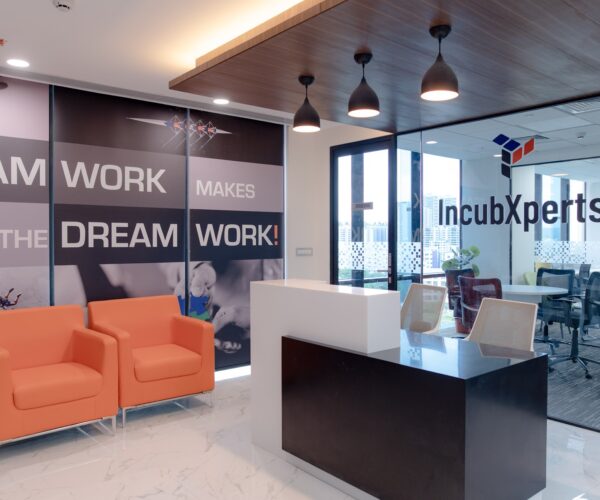By Chandran Iyer
In an age of hyper-connectivity, perpetual distractions, and dopamine-fueled multitasking, the real competitive advantage isn’t speed or funding—it’s focus. And nothing encapsulates this better than the concept of “Monk Mode.”
Monk Mode is a term borrowed from spiritual and monastic traditions, adapted for the modern high-performer. It’s the deliberate act of cutting off distractions, minimizing obligations, and creating an environment of intense, uninterrupted focus—often over a span of weeks or months. For CEOs and Founders trying to scale their startups or even legacy companies, this isn’t just a productivity hack. It’s a survival strategy.
Today’s business leaders are bombarded by emails, investor calls, pitch decks, LinkedIn notifications, Slack messages, and the ever-looming pressure to be “visible” on social media. Amid this chaos, strategic clarity is often the first casualty. CEOs become reactive instead of proactive. Long-term vision gets replaced by short-term firefighting.
But scaling a company isn’t about reacting—it’s about building.
And building requires depth.
Enter Monk Mode.
What Is Monk Mode, Really?
Monk Mode is not just a digital detox or a productivity trend. It’s a full-blown mental, emotional, and strategic reset. At its core, Monk Mode is about three pillars:
- Deep Work – Dedicating uninterrupted hours to mission-critical thinking or creation. Think Jeff Bezos locking himself away to work on Amazon Prime, or Steve Jobs obsessing over iPhone design.
- Extreme Clarity – Removing mental clutter to identify what truly matters. Saying “no” to 99% of things so you can say a powerful “yes” to the 1% that moves the needle.
- Systemic Simplicity – Reducing complexity in routines, communications, and business processes to gain agility and mental bandwidth.
When these pillars align, something powerful happens: Founders begin to operate not from chaos, but from clarity.
The Monk Mode Mindset: Learning from the Best
Some of the world’s most iconic business builders have embraced Monk Mode without necessarily calling it that.
- Elon Musk, during Tesla’s toughest scaling periods, would famously sleep under his desk, immersed in the factory floor and production bottlenecks.
- Bill Gates has his legendary “Think Weeks,” where he isolates himself with a pile of books, whiteboards, and big questions.
- Jack Dorsey has often spoken about his strict routines, fasting, and meditation, especially when navigating complex business transitions.
Monk Mode doesn’t have to look like a cave in the Himalayas. It could be a rented cabin in the woods, a no-meetings month, or even a week in an off-grid Airbnb with a notebook and your product roadmap.
The goal is not escape—it’s recalibration.
Importance of Going Monk Mode
- To Reconnect with Vision
As companies grow, vision often becomes diluted. Stakeholders pull in different directions. Founders risk becoming glorified managers instead of visionaries.
Monk Mode is your chance to zoom out, reconnect with your “Why,” and reimagine your company’s “North Star.” When you emerge, your team doesn’t just get answers—they get alignment.
- To Solve Bottlenecks
Scaling challenges—whether in hiring, technology, or capital—are rarely solved in noisy boardrooms. They need slow thinking. Time to weigh trade-offs. Space to ask the “What if?” questions.
Monk Mode allows founders to tackle bottlenecks like an engineer: with focus, iteration, and clarity.
- To Create Culture from the Core
Scaling a company is not just about systems and KPIs—it’s about culture. And culture starts at the top.
When a founder embodies focus, clarity, and discipline, it sets a tone that trickles down. Monk Mode is leadership by example.
The Monk Mode Playbook for CEOs and Founders
Here’s how modern leaders can implement Monk Mode without abandoning their companies:
- Declare Your Intent
Communicate your Monk Mode clearly to your leadership team. Let them know you’ll be unplugging from day-to-day noise to focus on big-picture work. Build trust by delegating authority.
- Design Your Environment
Environment shapes behavior. Choose a space—physical or digital—that signals deep focus. That could mean renting a cabin, going off-grid for a weekend, or creating a “no-notification” zone in your office.
- Set Clear Monk Mode Goals
Don’t just disappear. Go into Monk Mode with 1–3 high-impact goals:
- Drafting a product roadmap
- Writing a culture manifesto
- Solving a growth bottleneck
- Redesigning the org structure
- Create Rituals, Not Just Routines
Adopt rituals that anchor your focus. Morning walks. Meditation. Reading biographies. Journaling. These habits create mental space for insights to emerge.
- Re-enter with Clarity
When you emerge, don’t just dump your insights. Structure a re-entry. Debrief with your team. Translate clarity into actionable strategy. Inspire your leaders with the fire you found in silence.
Monk Mode Is Not a Luxury. It’s a Necessity.
Most founders think they can’t afford to disconnect. But the truth is, they can’t afford not to.
Companies that scale without clarity often collapse under their own weight. Vision fades. Culture erodes. Growth stalls. Monk Mode is the counterbalance. It’s the founder’s sanctuary for long-term thinking in a short-term world.
In the noise of hustle culture, Monk Mode whispers a powerful truth:
“Growth isn’t just about doing more. It’s about doing what matters, deeply and well.”
Final Thoughts: Build Like a Monk, Scale Like a Maverick
In spiritual traditions, monks retreat to reconnect with truth. Founders must do the same—not just for inner peace, but for business performance. The stillness breeds insight. The silence births strategy.
As your company scales, the demands on your attention will only multiply. Monk Mode is your secret weapon—not to escape the business, but to serve it better.
So, book that time. Shut that door. Switch off the noise.
Go Monk Mode.
And come back ready to build something timeless.


